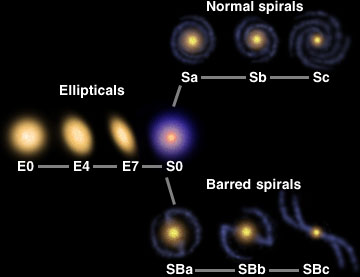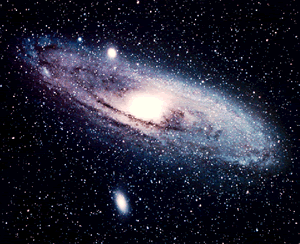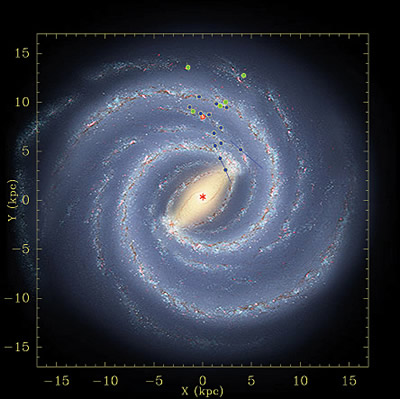Locations of star-forming regions (dots) superposed on an artist's conception of the Milky Way. The locations have been measured by "triangulation" using the NRAO/NSF Very Long Baseline Array of radio telescopes.
Image Courtesy of Mark Reid, Harvard-Smithsonian Center for Astrophysics; Robert Hurt (NASA/IPAC)
New Galactic Distance Measurements Increase Milky Way's Mass and Rotation Speed
News story originally written on January 30, 2009
Astronomers have learned that our galaxy, called the Milky Way, is rotating faster than they used to think. It also has a bigger mass than they used to think. This means the Milky Way might run into the Andromeda galaxy in about 5 billion years, which is sooner than they used to think.
The Milky Way is a spiral galaxy, with the biggest and youngest stars located in arms that curl around the center. Astronomers think there are probably four spiral arms in the Milky Way galaxy, although it is still possible that the galaxy has only two spiral arms or that there are two bigger arms that contain both old and young stars, along with two smaller arms that have only younger stars.
In order to learn more about this, an astronomer names Mark Reid led a team that made measurements using telescopes in Hawaii, across the United States, and in the U.S. Virgin Islands.
You might also be interested in:

When we look up at the night sky, we notice that there are many stars in our sky. Stars must like to live together in star cities - galaxies. Our city of stars is called the Milky Way, and it is home to
...more
Would it be more difficult to pull an elephant or a mouse? If you pulled each animal the same amount, the mouse would come towards you but the elephant would not move at all, even if he didn’t try to
...more
Spiral galaxies may remind you of a pinwheel that blows in the breeze. Like a pinwheel, a spiral galaxy is rotating, and it has spiral arms. Through a telescope or binoculars,a spiral galaxy may look
...more
Scientists have learned that Mount Hood, Oregon's tallest mountain, has erupted in the past due to the mixing of two different types of magma. Adam Kent, a geologist at Oregon State University, says this
...more
The Earth's mantle is a rocky, solid shell that is between the Earth's crust and the outer core. The mantle is made up of many different reservoirs that have different chemical compositions. Scientists
...more
Some faults look strong and like they wouldn’t cause an earthquake. But it turns out that they can slip and slide like weak faults causing earthquakes. Scientists have been looking at one of these faults
...more
The sun goes through cycles that last approximately 11 years. These solar cycle include phases with more magnetic activity, sunspots, and solar flares. They also include phases with less activity. The
...more















